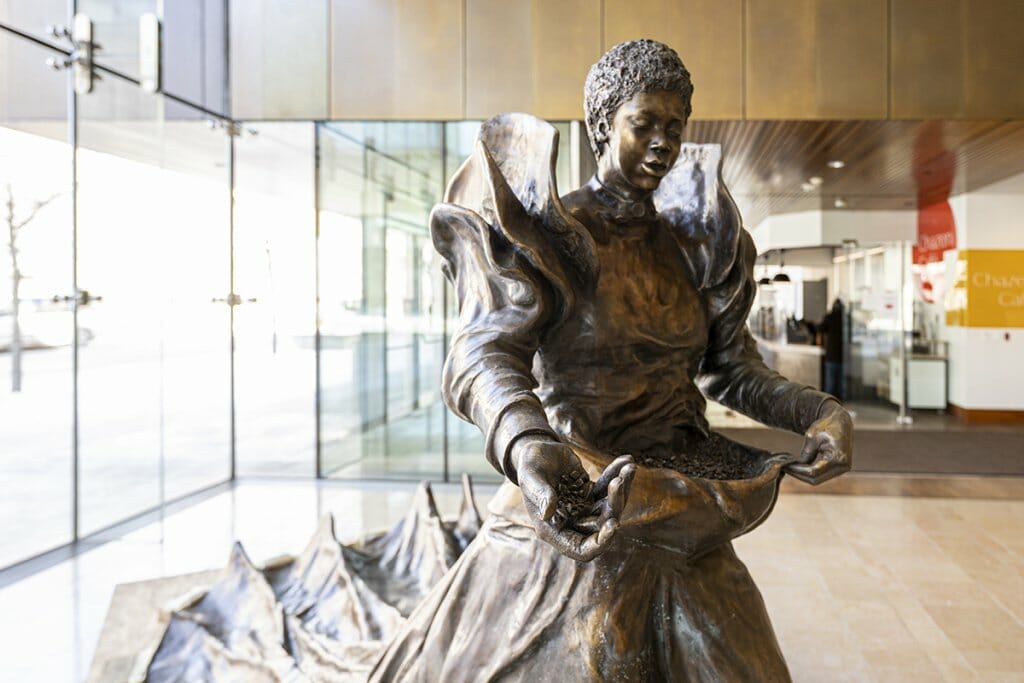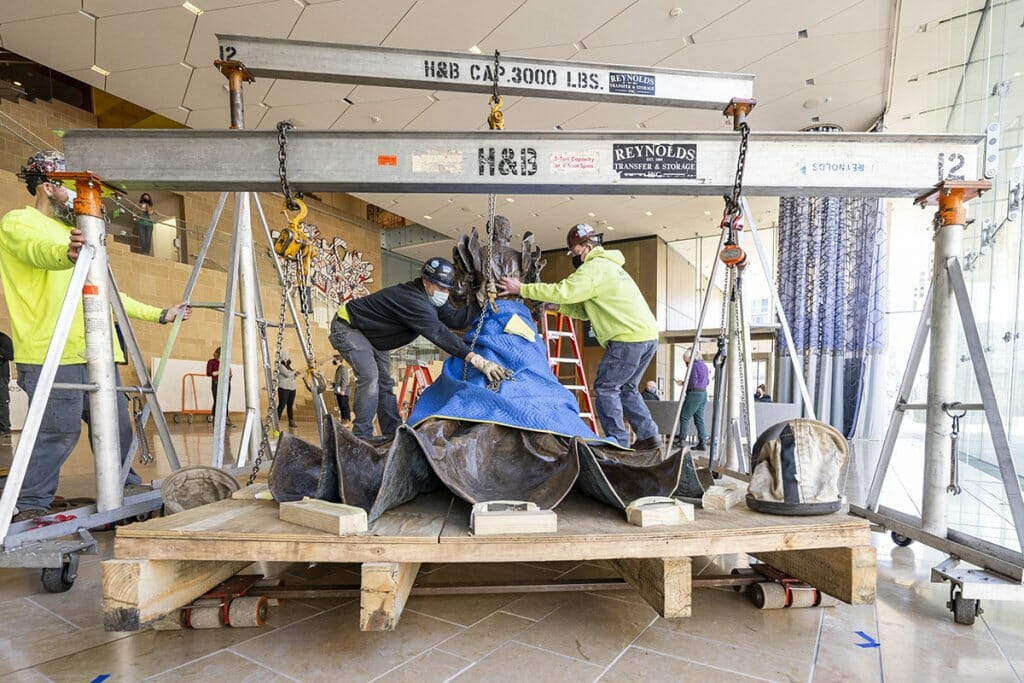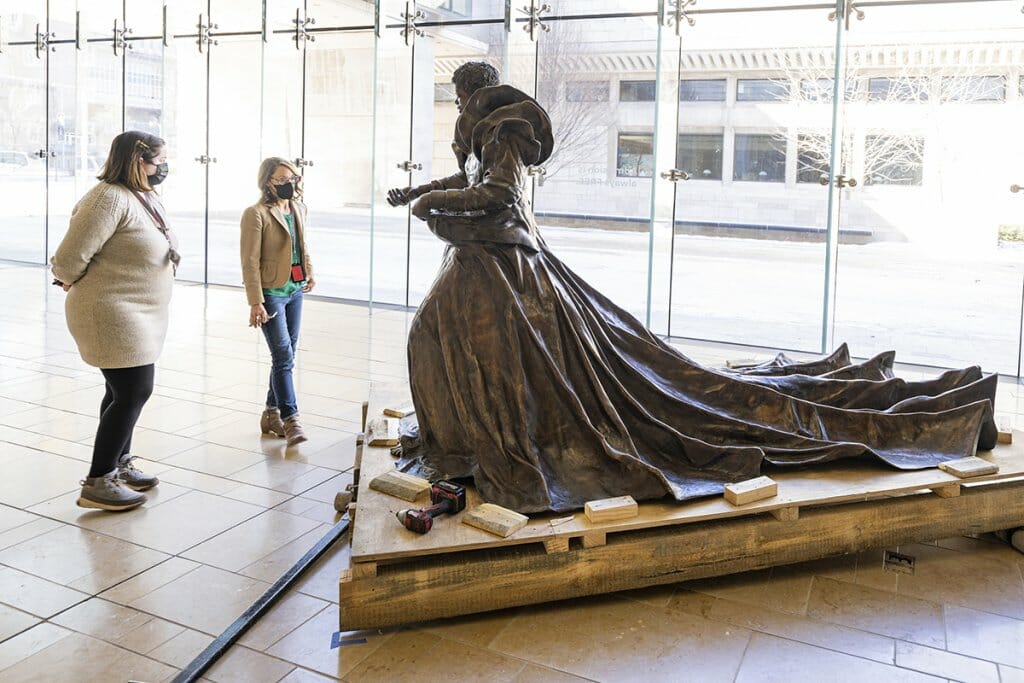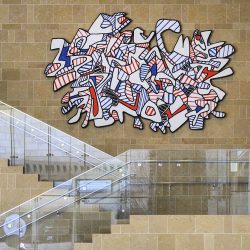Seeds from South Africa
A new sculpture at the Chazen Museum connects agriculture on two continents.

Like all Sibande’s work, Sower in the Field explores the intersection of of race, gender, and labor in South Africa.
In her corner of the Chazen Museum of Art’s Mead Witter Lobby, Mary Sibande’s Sower in the Field is in constant conversation with light. The sculpture — a figure based on a body cast of the artist — wears a cascading dress and cradles an apron of seeds. At eye-level, the contours of the clothing catch the daylight from the wall of windows along East Campus Mall. When viewed from above, shadows spill from her skirt’s hem and ebb and flow with the movement of the sun throughout the day. At night, passersby can admire the work’s quiet, commanding presence backlit against the museum’s lobby.
The bronze piece is a rare departure from Sibande’s usual mixed-media approach but still bears hallmarks of her work, which interrogates intersections of race, gender, and labor in South Africa. The sculpture was cast for the Chazen at a foundry in South Africa and traveled by cargo ship, train, and truck to reach Madison. After its long journey, its message is right at home on the UW campus.

Sower in the Field is the latest acquisition under the Sara Guyer and Scott Straus Contemporary African Art Initiative.
“For a land-grant university, we thought this was a really interesting dialogue: a woman who’s planting something, birth and rebirth, agriculture,” says Katherine Alcauskas, chief curator at the Chazen. “We have a lot of works by John Steuart Curry and other regionalists, and we have a lot of similar images of farmers in fields, so we thought this would be a counterpart [to inspire] students to think about planting, about regionalism, and about the role of crops in the Midwest and in Africa.”
Sower is the latest acquisition under the Sara Guyer and Scott Straus Contemporary African Art Initiative (CAAI), made possible by the Straus Family Foundation. The curatorial endeavor was funded thanks to former UW professors Sara Guyer and Scott Straus to celebrate the diversity of contemporary African art at a campus with a long history in African studies.
“Sara and I found incredible beauty, excitement, energy, and creativity in contemporary African art,” Straus says. “Part of the impetus was wanting to bring it to a larger audience in the United States and to support African artists.”
After an exhibition of CAAI works in fall 2023, the show will likely travel, sending Sower on another, albeit shorter, journey.
Published in the Summer 2022 issue




Comments
No comments posted yet.